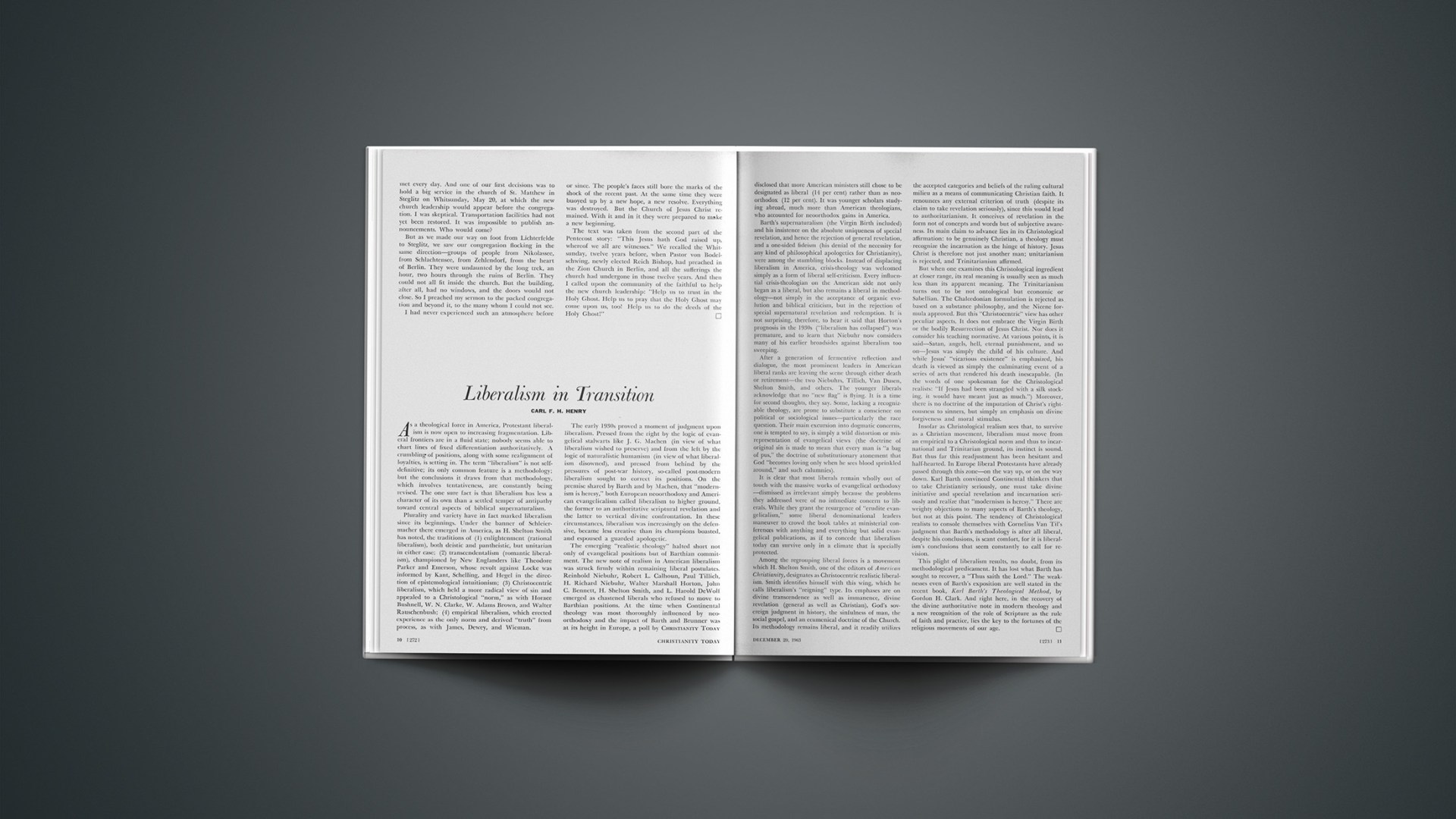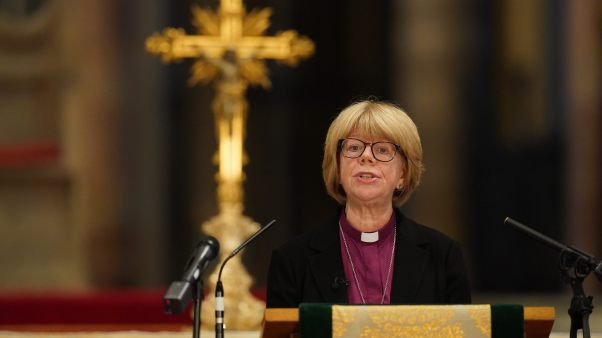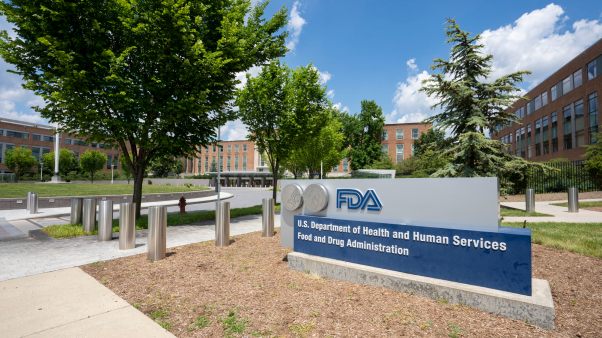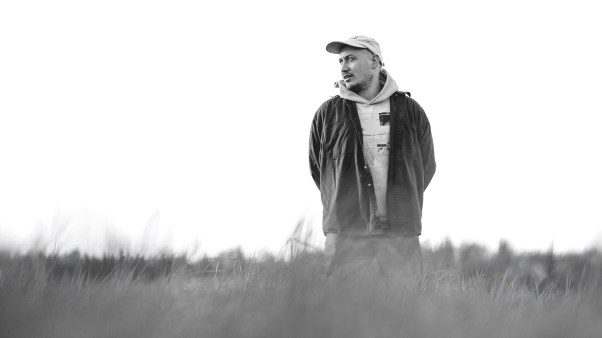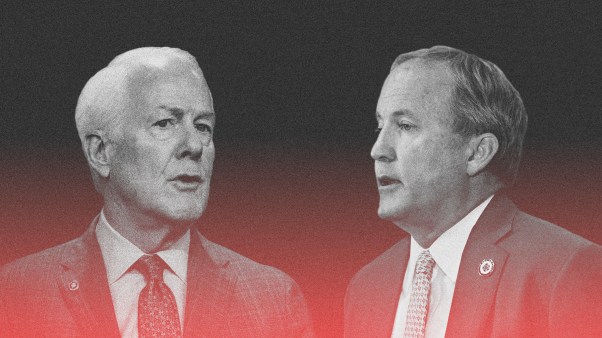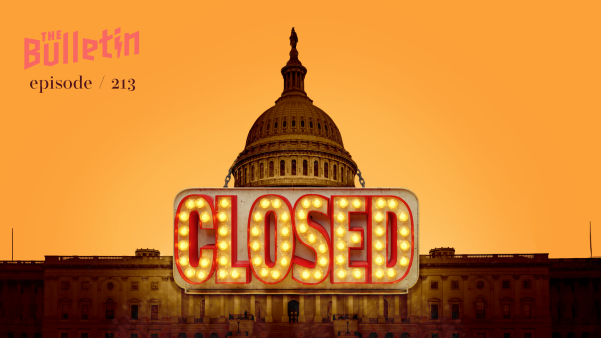As a theological force in America, Protestant liberalism is now open to increasing fragmentation. Liberal frontiers are in a fluid state; nobody seems able to chart lines of fixed differentiation authoritatively. A crumbling of positions, along with some realignment of loyalties, is setting in. The term “liberalism” is not self-definitive; its only common feature is a methodology; but the conclusions it draws from that methodology, which involves tentativeness, are constantly being revised. The one sure fact is that liberalism has less a character of its own than a settled temper of antipathy toward central aspects of biblical supernaturalism.
Plurality and variety have in fact marked liberalism since its beginnings. Under the banner of Schleiermacher there emerged in America, as H. Shelton Smith has noted, the traditions of (1) enlightenment (rational liberalism), both deistic and pantheistic, but Unitarian in either case; (2) transcendentalism (romantic liberalism), championed by New Englanders like Theodore Parker and Emerson, whose revolt against Locke was informed by Kant, Schelling, and Hegel in the direction of epistemological intuitionism; (3) Christocentric liberalism, which held a more radical view of sin and appealed to a Christological “norm,” as with Horace Bushnell, W. N. Clarke, W. Adams Brown, and Walter Rauschenbush; (4) empirical liberalism, which erected experience as the only norm and derived “truth” from process, as with James, Dewey, and Wieman.
The early 1930s proved a moment of judgment upon liberalism. Pressed from the right by the logic of evangelical stalwarts like J. G. Machen (in view of what liberalism wished to preserve) and from the left by the logic of naturalistic humanism (in view of what liberalism disowned), and pressed from behind by the pressures of post-war history, so-called post-modern liberalism sought to correct its positions. On the premise shared by Barth and by Machen, that “modernism is heresy,” both European neoorthodoxy and American evangelicalism called liberalism to higher ground, the former to an authoritative scriptural revelation and the latter to vertical divine confrontation. In these circumstances, liberalism was increasingly on the defensive, became less creative than its champions boasted, and espoused a guarded apologetic.
The emerging “realistic theology” halted short not only of evangelical positions but of Barthian commitment. The new note of realism in American liberalism was struck firmly within remaining liberal postulates. Reinhold Niebuhr, Robert L. Calhoun, Paul Tillich, H. Richard Niebuhr, Walter Marshall Horton, John C. Bennett, H Shelton Smith, and L. Harold DeWolf emerged as chastened liberals who refused to move to Barthian positions. At the time when Continental theology was most thoroughly influenced by neoorthodoxy and the impact of Barth and Brunner was at its height in Europe, a poll by CHRISTIANITY TODAYdisclosed that more American ministers still chose to be designated as liberal (14 per cent) rather than as neoorthodox (12 per cent). It was younger scholars studying abroad, much more than American theologians, who accounted for neoorthodox gains in America.
Barth’s supernaturalism (the Virgin Birth included) and his insistence on the absolute uniqueness of special revelation, and hence the rejection of general revelation, and a one-sided fideism (his denial of the necessity for any kind of philosophical apologetics for Christianity), were among the stumbling blocks. Instead of displacing liberalism in America, crisis-theology was welcomed simply as a form of liberal self-criticism. Every influential crisis-theologian on the American side not only began as a liberal, but also remains a liberal in methodology—not simply in the acceptance of organic evolution and biblical criticism, but in the rejection of special supernatural revelation and redemption. It is not surprising, therefore, to hear it said that Horton’s prognosis in the 1930s (“liberalism has collapsed”) was premature, and to learn that Niebuhr now considers many of his earlier broadsides against liberalism too sweeping.
After a generation of fermentive reflection and dialogue, the most prominent leaders in American liberal ranks are leaving the scene through either death or retirement—the two Niebuhrs, Tillich, Van Dusen, Shelton Smith, and others. The younger liberals acknowledge that no “new flag” is flying. It is a time for second thoughts, they say. Some, lacking a recognizable theology, are prone to substitute a conscience on political or sociological issues—particularly the race question. Their main excursion into dogmatic concerns, one is tempted to say, is simply a wild distortion or misrepresentation of evangelical views (the doctrine of original sin is made to mean that every man is “a bag of pus,” the doctrine of substitutionary atonement that God “becomes loving only when he sees blood sprinkled around,” and such calumnies).
It is clear that most liberals remain wholly out of touch with the massive works of evangelical orthodoxy—dismissed as irrelevant simply because the problems they addressed were of no immediate concern to liberals. While they grant the resurgence of “erudite evangelicalism,” some liberal denominational leaders maneuver to crowd the book tables at ministerial conferences with anything and everything but solid evangelical publications, as if to concede that liberalism today can survive only in a climate that is specially protected.
Among the regrouping liberal forces is a movement which H. Shelton Smith, one of the editors of American Christianity, designates as Christocentric realistic liberalism. Smith identifies himself with this wing, which he calls liberalism’s “reigning” type. Its emphases are on divine transcendence as well as immanence, divine revelation (general as well as Christian), God’s sovereign judgment in history, the sinfulness of man, the social gospel, and an ecumenical doctrine of the Church. Its methodology remains liberal, and it readily utilizes the accepted categories and beliefs of the ruling cultural milieu as a means of communicating Christian faith. It renounces any external criterion of truth (despite its claim to take revelation seriously), since this would lead to authoritarianism. It conceives of revelation in the form not of concepts and words but of subjective awareness. Its main claim to advance lies in its Christological affirmation: to be genuinely Christian, a theology must recognize the incarnation as the hinge of history. Jesus Christ is therefore not just another man; unitarianism is rejected, and Trinitarianism affirmed.
But when one examines this Christological ingredient at closer range, its real meaning is usually seen as much less than its apparent meaning. The Trinitarianism turns out to be not ontological but economic or Sabellian. The Chalcedonian formulation is rejected as based on a substance philosophy, and the Nicene formula approved. But this “Christocentric” view has other peculiar aspects. It does not embrace the Virgin Birth or the bodily Resurrection of Jesus Christ. Nor does it consider his teaching normative. At various points, it is said—Satan, angels, hell, eternal punishment, and so on—Jesus was simply the child of his culture. And while Jesus’ “vicarious existence” is emphasized, his death is viewed as simply the culminating event of a series of acts that rendered his death inescapable. (In the words of one spokesman for the Christological realists: “If Jesus had been strangled with a silk stocking, it would have meant just as much.”) Moreover, there is no doctrine of the imputation of Christ’s righteousness to sinners, but simply an emphasis on divine forgiveness and moral stimulus.
Insofar as Christological realism sees that, to survive as a Christian movement, liberalism must move from an empirical to a Christological norm and thus to incarnational and Trinitarian ground, its instinct is sound. But thus far this readjustment has been hesitant and half-hearted. In Europe liberal Protestants have already passed through this zone—on the way up, or on the way down. Karl Barth convinced Continental thinkers that to take Christianity seriously, one must take divine initiative and special revelation and incarnation seriously and realize that “modernism is heresy.” There are weighty objections to many aspects of Barth’s theology, but not at this point. The tendency of Christological realists to console themselves with Cornelius Van Til’s judgment that Barth’s methodology is after all liberal, despite his conclusions, is scant comfort, for it is liberalism’s conclusions that seem constantly to call for revision.
This plight of liberalism results, no doubt, from its methodological predicament. It has lost what Barth has sought to recover, a “Thus saith the Lord.” The weaknesses even of Barth’s exposition are well stated in the recent book, Karl Barth’s Theological Method, by Gordon H. Clark. And right here, in the recovery of the divine authoritative note in modern theology and a new recognition of the role of Scripture as the rule of faith and practice, lies the key to the fortunes of the religious movements of our age.

